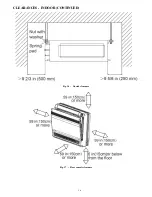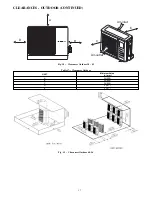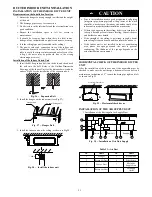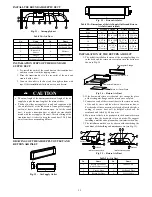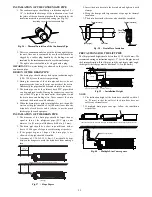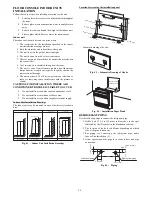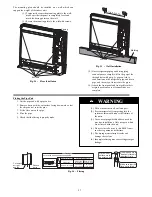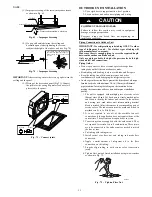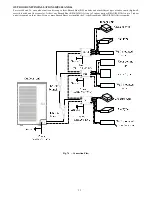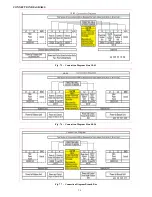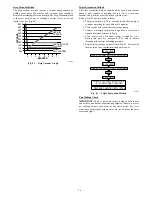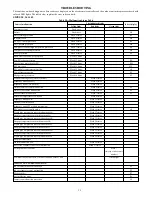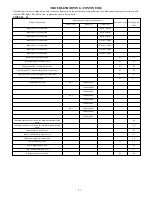
27
The mounting plate should be installed on a wall which can
support the weight of the indoor unit.
(1.) Temporarily secure the mounting plate to the wall,
make sure that the panel is completely level, and
mark the boring points on the wall.
(2.) Secure the mounting plate to the wall with screws.
6screws
Casing
Fig. 54
-
Floor Installation
6screws
Molding
7 7/8 in (200 mm)
Fig. 55
-
Wall Installation
(3.) Once refrigerant piping and drain piping
connections are complete, fill in the gap of the
through hole with putty. A gap can lead to
condensation on the refrigerant pipe, and drain
pipe, and the entry of insects into the pipes.
(4.) Attach the front panel and front grille in their
original positions once all connections are
complete.
Flaring the Pipe End
1. Cut the pipe end with a pipe cutter.
2. Remove burrs with the cut surface facing downward so that
the chips do not enter the pipe.
3. Fit the flare nut on the pipe.
4. Flare the pipe.
5. Check that the flaring is properly made.
(1.) DO not use mineral oil on flared part.
(2.) Prevent mineral oil from getting into the
system as this would reduce the lifetime of
the units.
(3.) Never use piping which had been used for
previous installations. Only use parts which
are delivered with the unit.
(4.) Do never install a drier to this R410A unit
in order to guarantee its lifetime.
(5.) The drying material may dissolve and
damage the system.
(6.) Incomplete flaring may cause refrigerant gas
leakage.
!
WARNING
Make sure that the
flare nut is fitted
The pipe end must
be evenly flared in
a perfect circle
Flare’s inner
surface must
be scratch-free
Cut exactly
at right
angles
Renove
burrs
Flaring
Set exactly at the position shown below
A
Die
A
0~0.02 in (0~0.5 mm)
0.04~0.06 in
(1.0~1.5 mm)
0.06~0.08 in
(1.5~2.0 mm)
Flare tool for R410A
Clutch-type
Clutch-type
(Rigid-type)
Wing-nut type
(lmperial-type)
Conventional flare tool
Fig. 56
-
Flaring




